In this article, I reflect upon the issues of beholding participatory multisensory works within the ocularcentric world of the art gallery. The sonic and haptic engagement demanded by my pieces confronts conventions of behaviour in the reception of so-called 'visual art', particularly the kind of aesthetic distancing expected of the autonomous artwork. While such notions of autonomy have been challenged since the 1960s, the curatorial challenges posed by my work reminds us of how far we have to go to cater for a truly inclusive and embodied experience of art.
Introduction
I am an artist who has become acutely visually impaired and I work with a number of media and materials, from film and photography to installation and sculpture. In this article, I will focus on my bell-bronze sculptural work, which has taken up most of my time, resources and energy as an artist. This body of work can be split into three distinct categories: Bells and Gongs, Objects from Personal History, and Topographical 'Paintings' of Iceland's volcanic landscape.
When making artwork, I find myself being constantly confronted with the question, "What is it you are doing?" Although this question is often posed by friends, colleagues and other interested parties, such as curators, the most difficult voice to answer is my own. What am I doing? Why am I doing it? Is it likely to be worth the cost, time and effort? Will anyone care? Will I mind if they do or don't?
The projects I have embarked upon have caused me to have many different answers to these questions. Although the fields of philosophy, politics, craft, learning, and wellbeing have always featured in my work, describing my work in these terms feels unsatisfactory. A more unifying definition is required, one that describes not only what I am doing but also how I am doing it. What follows is a reflective account of my arts practice, in which I explore my artwork's content and production. I will then consider how my art has been categorised or labelled, before discussing what happens when my art is displayed.
On Beholding
My bell-bronze sculptural works are designed for a degree of physical interaction to take place by the beholder by means of touching and ringing. I use the term 'beholder' rather than the problematic, because ocularcentric, term 'viewer' so as to emphasize the multisensory nature of my work. Indeed, the sonic and haptic elements of the work are extremely important to me, but these were never intended to articulate a visual deficit or somehow compensate for it, nor were the bronzes intended to be presented as objects that might appeal most to blind people. Instead, the acts of listening and touching invited by the bronzes are designed to expand the remit of any encounter rather than act as replacements for the visual.
The sonic component within my work is important primarily because I believe that in modern urban environments, sound is so ubiquitous that we are constantly filtering it out rather than actively listening to what is around us. I would go so far as to say that few people are taught how to listen, other than professional musicians, mechanical engineers and some clinical practitioners such as anesthetists. By striking my works, the beholder has the opportunity to engage in a multisensory, choreographic experience, one in which they have control of their own body as well as the work's resonant response. The bell-bronze alloy also provides for olfactory, gustatory and thermal encounters. There is a chemical reaction with human skin and, according to Georgina Kleege, "prolonged handling leaves a distinct scent on the beholder's hands" (142). I have also noticed children placing their faces against the metal on hot days and even occasionally licking the metal's surface. By engaging with the work in different ways, choosing where and how the sculpture is struck, beholders can moderate and customize both their choreographic and listening experiences. In this way, my work is providing a new paradigm for physical engagement with art.
By inviting beholders to stroke or even strike my sculptures, I am also rebelliously confounding the 'no touching' policy traditionally adopted by museums. When located in gallery spaces, even some of the largest and most robust sculptures are off limits to touch. For example, iterations of Henry Moore's huge bronze figures titled King and Queen (1957), which are often displayed at the Tate and Henry Moore Foundation galleries, are either fenced off or are guarded by attendants who will diligently police a no touching policy. The first casting of this work sits on a desolate Scottish moor where visitors as well as passing sheep are free to physically engage with the work.
My series of bells, gongs, chimes and singing bowls are symbols of meditation and the passing of time, which I made to give beholders an opportunity to consider tone, resonance and dissonance, and, of course, to engage in detailed or active listening. Throughout the world, bells and gongs are used as markers of time and of significant events. In many East Asian languages such as Lao, Thai, Shan and Burmese, the word for hour is an onomatopoeic play on the sound of the gong. Also in East Asia, the various meditation gongs (kyizi, tohzi and maung) are used as an audio mantra, one that is situated outside yet alongside the body of the meditator and one over which the meditator has choreographic control. The sound goes some way to replacing the internal utterances (such as "om mani padme hum"), which instigate the meditative process. The sound of the bell also features in Zen literature and meditation philosophy: "… when a bell rings it is only the sound of the bell listening to the sound of the bell. Or to put in another way it is the sound of yourself ringing. This is the moment of enlightenment" (Kapleau qtd. in Fontana).
My small singing bowls also give beholders the opportunity to hold the works in one hand and play them with the other (fig. 1). Beholders notice that the vibration continues to fizz, even when the audible sound appears to have decayed completely. Again, according to Kleege:
I struck one of them and listened to the long sustained note; and at the point where I could no longer hear it, I touched the edge with my finger and found it still vibrating at a very high frequency. The surface felt fizzy under my touch and reminded me of something I know but do not often think about: sound and touch are intimately linked. (145)
There is also a strong olfactory interaction with the singing bowls as a large surface area of the hand is in contact with the metal, which, as noted above, leaves a distinct and lingering scent.
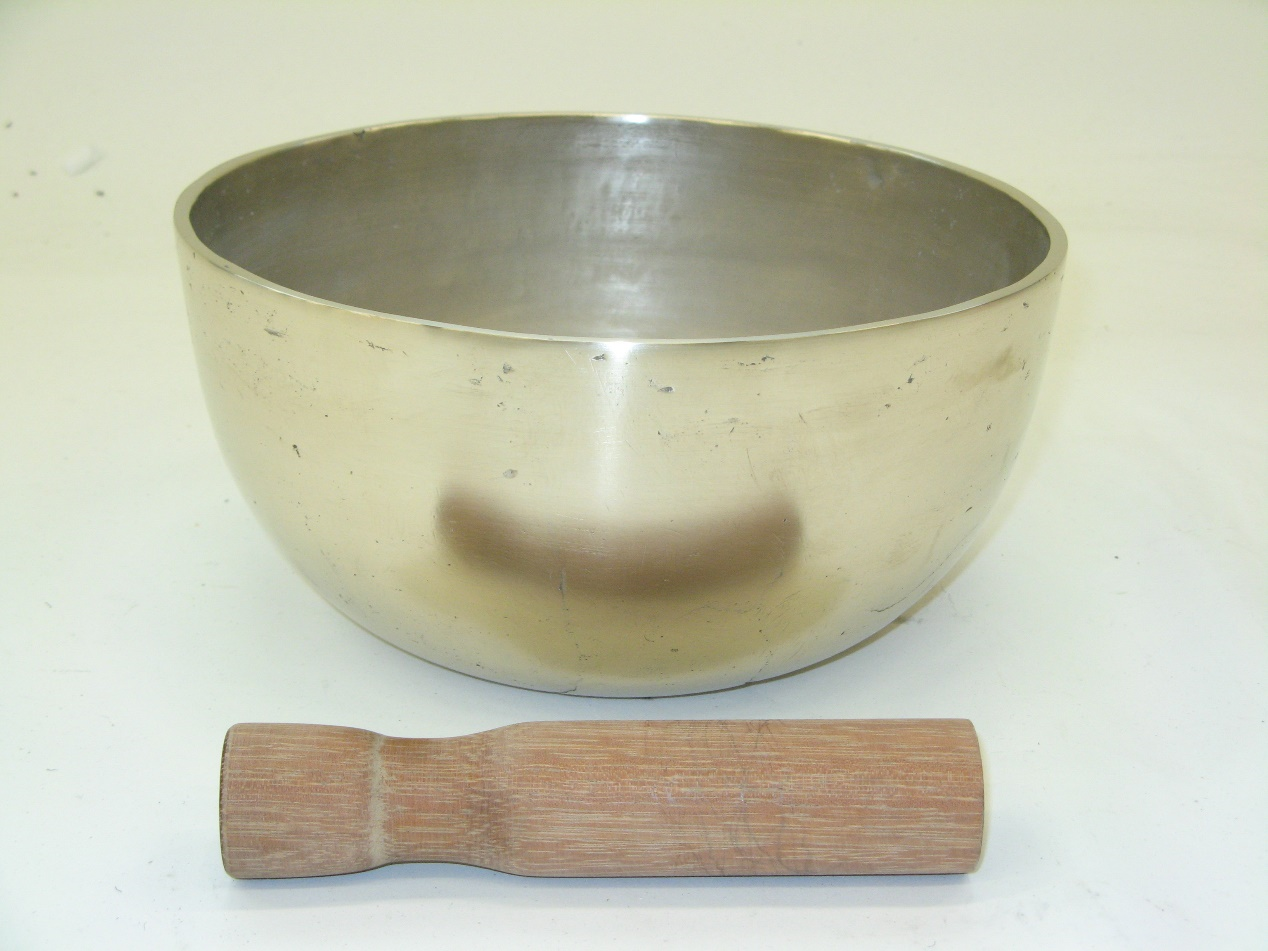
Fig. 1: F5 Refresh (2008) – Singing Bowl, Bell-bronze. 250 x 250 x 160 mm. Aaron McPeake
An oriental-soup-bowl-shaped pale bronze bowl. The ellipse which reveals some of its interior is darker in colour. In front of the bowl is a wooden cylindrical clapper which is about the same length as the bowl's diameter. There is a diminished and distorted reflection of the cylinder in the satin surface of the bowl.
The second series consists of cast objects selected from personal history, from my childhood teddy bear and broken 78rpm records to my late mother's painting palette (fig. 2) and my late partner's breast radiation mask. The overarching theme here is one of reflecting on loss and the bulk of these works refer to familial losses. However, I have also made several works that reference the loss of my own vision. Once I Saw it All (2008) is a casting of the familiar Snellen Chart and Iris (2008) is a seven-inch doughnut depicting the complex patterns of an invented iris. The Blind Narcissus Invents His Own Mirror (2008) and Echo (2008) are life size, plate-gong renderings of the shadow of my own head and shoulders. The Blind Narcissus piece is finished on the 'front' surface with a highly polished tin plating. With this work, sighted beholders can see a distorted reflection of themselves in the slightly concave surface. Echo is made from the same mold pattern as Blind Narcissus but without the silvered finish, and it rings with a slightly different tone. These two pieces were made in response to a quotation from Jacques Derrida's Memoirs of the Blind: "[…] there where a blind Narcissus, inventing a mirror without image, lets it be seen that he does not see" (12). I took this as a challenge or a riddle that required solving and made the works in response to it. In retrospect, I think that the works betray my frustration with both my situation and Derrida's ambiguity.
This body of work concerning loss is intended to prompt questions about memory and value: how or why do sound and silence play a part in articulating a personal narrative? The sound emanated when striking or ringing a cast object related to memory and grieving provides material that acknowledges both the presence of the past and its absence in the present. The original objects are largely banal in nature but, when cast, are transformed into trophy-like items. It is this quality of solidity that makes them clearly readable as memorial items.
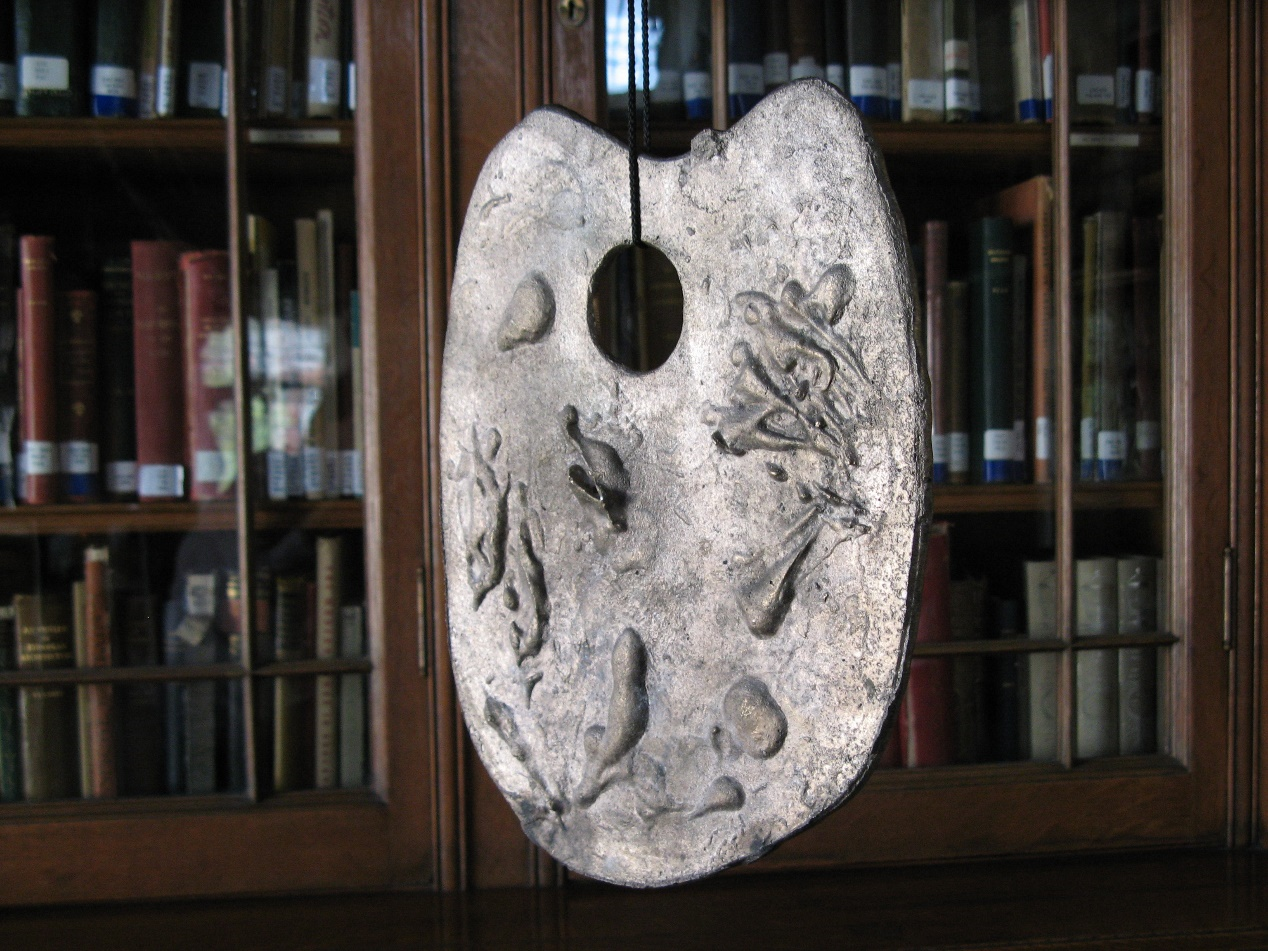
Fig. 2: Eileen's Palette (2008) Bell-bronze gong 300 x 230 x 10mm. Aaron McPeake
Hanging from fine black string is an oval shaped painting palette with a hole in its middle, three quarters of the way up. The metal is silver grey and the surface consists of different shaped blobs, traces of viscous paint.
Thirdly, I have produced a series of wall-hung 'painting' works, depicting the topography of Icelandic volcanic landscapes (fig. 3). These are made using an open-cast method where the oxide-hungry nature of the bell-bronze (20% tin, 80% copper) freezes in the open air, creating patterns and colors that look remarkably like satellite photographs of the Icelandic landscape. These works vary in size and weigh between two and eleven kilograms. Again, the intention is for these works to be touched and rung, and they provide a novel 'gong' quality in various pitches. My intention was not only to accurately depict the topography and nature of volcanic landscapes but also to give them audible and unique voices. As the sizes vary considerably, so too do the resulting tones which have a comparable range to a piano keyboard. These works are also connected with personal memories of imaginary wanderings as a child; my study of maps and books about Iceland was often conducted together with my grandfather. Memories of watching television footage in primary school in 1973 of the volcano erupting in Iceland have stayed with me and prompted me to embark on the process of making 'paintings' which ring, giving the landscapes real voices that can be extracted by beholders. Notions of the disparity of time periods and their attendant understanding, from the personal to the geological, are also important themes within this work.
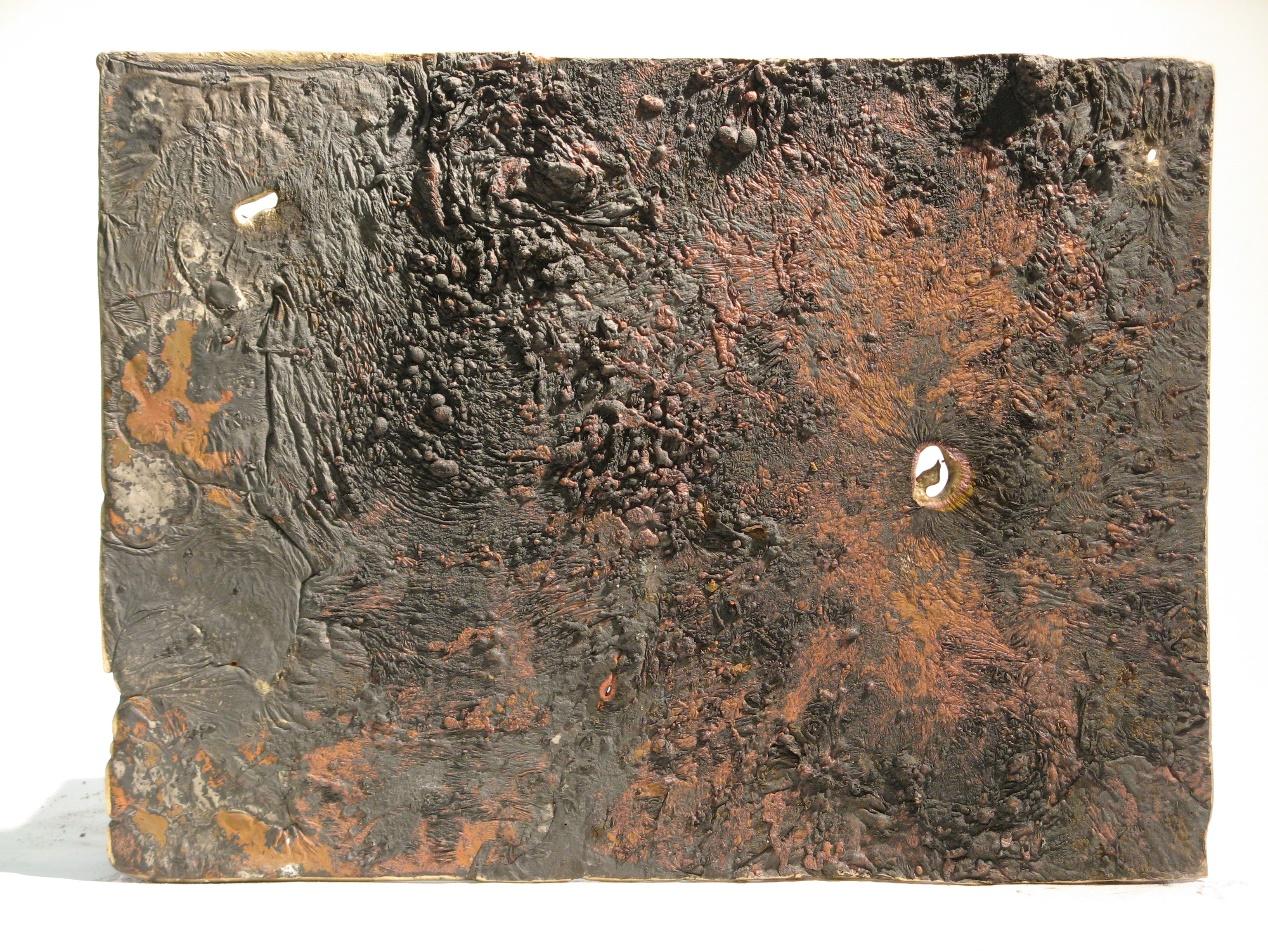
Fig. 3: Iceland Landscape (2011) Bell-bronze gong. Aaron McPeake
A landscape-orientated rectangle. The surface varies in colour from orange to red to black. The darker patches contain more pronounced, blobby and random reliefs whereas the lighter areas have a smoother quality that contains slight wrinkles.
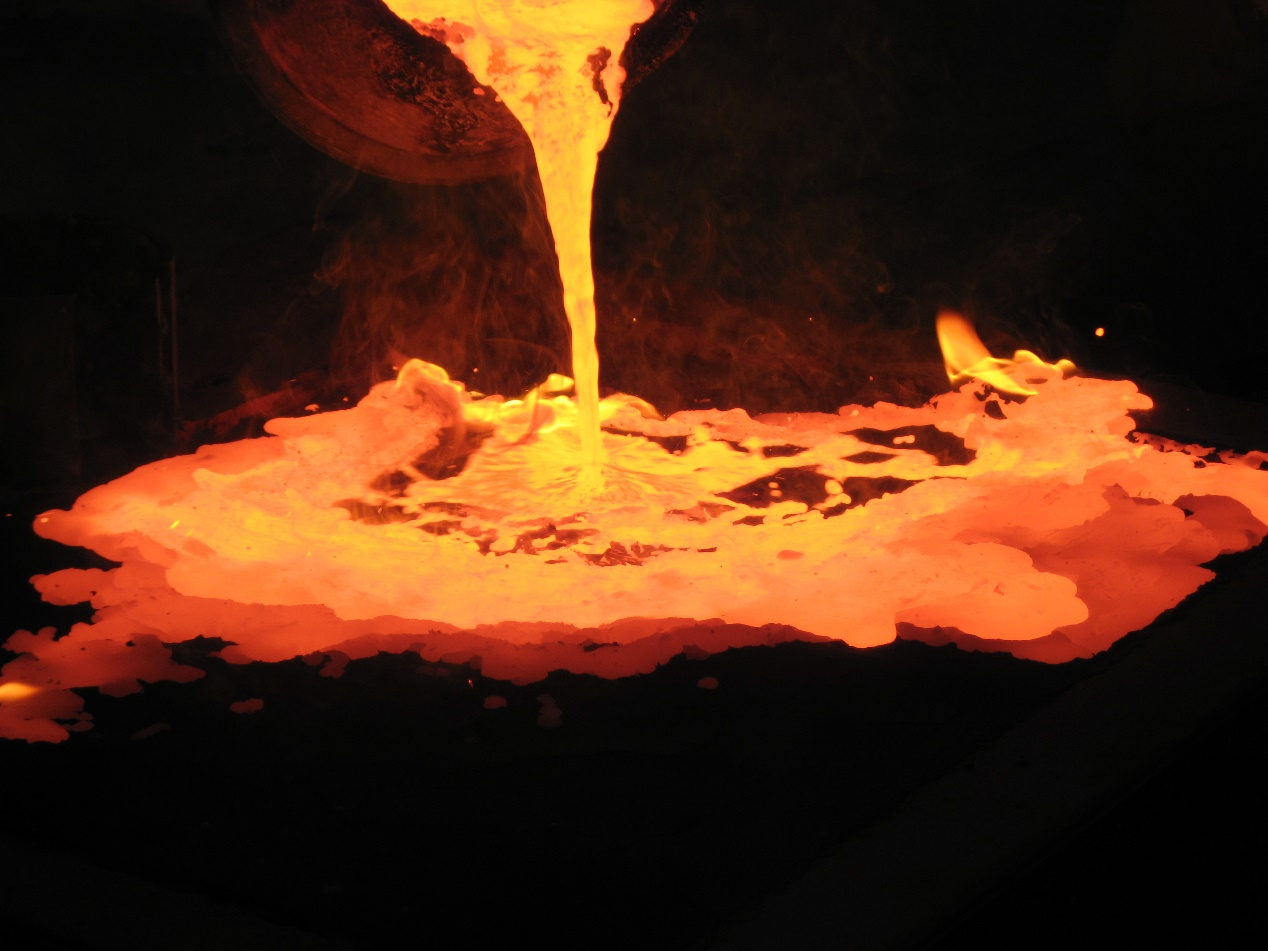
Fig. 4: Pouring bronze into open mould –making Iceland Landscape (2012)
A glowing crucible with a stream of orange liquid pouring down from it into a rectangle of orange liquid which is itself moving and sloshing violently.
On Making
As I see much less of the world than most people, the issue of how I am doing art is a question that cannot be separated from what it is I am doing with art. With bronze casting, I face and regularly undermine sets of assumptions about the extent of my involvement in the production process. Questions such as, "who made this for you?" or "do you have much to do with the making processes?" are common and infuriating because those who ask assume that my partial blindness prevents me from creating my own art. In fact, I rarely get help beyond asking for a pair of eyes to ensure that things are square, or when pouring molten metal, which is normally a two or three-person operation in any circumstance (fig. 4).
As I do not work in a single discipline or with a specific theme or medium, explaining my intentions when making artwork can only be done on a case-by-case basis. Describing the specifics of how I do things is also problematic, as I need to devise strategies and bespoke methods for making which vary considerably. Fayen d'Evie's articulation of her own artistic practices resembles my own ways of making. According to her: "Blundering and be-holding not only texture the narrative, but also recur as thematic content as I trace their emergence within my artistic and curatorial practices as performative strategies generated through blindness" (42).
I do not work in the same way or to the same industrial standards of finishing as commercial founders or artists who use commercial founders as fabricators. Unlike more conventional sculptors, I rarely attempt to emulate highly polished, perfect edging or porosity-free finishes as I cannot see them and when my sense of touch is satisfied with a surface or an edge I usually stop, regardless of the views of my sighted colleagues. To this end, I can celebrate the flaws inherent in my work. Rather than accommodating my sighted beholders' ideas of perfection, I am privileging the feel of the art work over its appearance. In short, like d'Evie, when planning and fabricating artworks, I blunder and when I make conventional or operational blunders, I reflect and refine my thinking and methods in order that I may continue blundering more effectively.
On Blind Identity
When showing as well as making work, I simultaneously regard myself as both a blind artist and an artist who happens to be blind. That is, I am simultaneously an artist who is defined by his blindness and an artist whose blindness is incidental to his art. My acceptance of this dual and potentially paradoxical status has come about after a long period of wrestling with the issue of how I and other blind visual artists are perceived and labeled. During the course of my PhD research and in my ongoing contacts with blind artists, I have found that the majority wish to identify as being artists who happen to be blind rather than artists for whom blindness is part of how they are labeled. 1 There are good reasons for this, as many artists are fearful that once blindness is added to the narrative, their work will be condescendingly viewed as either the result of occupational therapy or in terms of amazing feats of achievement rather than as serious artistic production.
An extreme example of this tendency to judge blind visual artists only in relation to their blindness is documentary material about Esref Armagan, a Turkish painter who has been white blind since birth. Most of the considerable media coverage he has received has been centred on a combination of his ability to draw and the findings of neuroscience studies in which he has participated, at Harvard and Toronto. Among the plethora of news articles written and documentary films made, there are no critical reviews of his work. The focus is on an exotic perception: although he is blind, he amazingly makes visual art. Armagan is "the painter with no eyes", one of the "superhumans" who defies common assumptions of blindness ("The Blind Painter"). 2 Not only does this create a reductive appreciation of his work, it also sets a precedent for similarly reductive readings of other blind artists' work.
The labeling and stigmatization of disabled artists is and will continue to be a subject hotly debated by understandably impassioned voices. 3 As I noted above, questions about the extent of my involvement in the production process can be an annoying distraction from the impact of the finished piece. However, although I still challenge anything patronizing, my blindness has become an ineluctable element of my identity and everyday life and I no longer have an urge to make a case against negative labeling. There has been a change here; perhaps my newly acquired indifference is a result of fatigue but I prefer to think that it has come about because my multisensory work meaningfully engages beholders rather than relying, like Armagan's, on the impact of considerations of the feat of its production.
On Exhibiting Work
As I have become thicker skinned about the issue of labeling, my concerns about exhibiting work have shifted into dealing with the practicalities of curation and presentation. As my works are designed to be engaged with physically, I encounter distinct areas of concern when showing or planning to show work. These relate to the constraints of white-cube protocols and the destruction of work by some of the more brutal beholders.
In the last few years, I have had preliminary discussions with three private and public art galleries about exhibiting my work. During these discussions, the question of touching and striking sculptures seemed to be a problematic issue on two counts. Firstly, curators wondered how gallery attendants could manage the exuberance of beholders. Secondly, they were concerned that granting beholders permission to touch my art works might encourage visitors to touch other usually off-limit pieces. As a consequence of these perceived difficulties, the discussions did not progress beyond the preliminary stage. Unless galleries radically revisit their approach to touching, there will not be much change on this front. The exception to this is occasions when galleries and arts festivals deliberately program exhibitions, events and haptic-art tours, which encourage the kinds of tactile interactions my own works need. 4
All my bell-bronze works emit sound; not only are these sounds sometimes very loud, they can also carry for considerable distances due to their frequencies. This factor needs to be considered when planning pieces for commission or when staging exhibitions. In some cases, this issue of disruptive noise pollution has stopped the project from going ahead altogether. In 2016, a major UK art gallery opened a new wing, and I was invited to make proposals for interactive sculptural installations throughout the building in the foyers and other public spaces outside the formal gallery spaces. I tailored my proposal accordingly, but it was rejected because the sound was considered to be too disruptive because it would bleed into the main collection displays, causing some confusion to visitors. Another instance when the element of sound was ruled out was a public art commission I was invited to complete in 2009. The work was to celebrate a local river, and my invitation was based on my work with sound and its resonance with the river. However, the client and local government planners disagreed with the commissioning body and insisted that no sonic element could be included, even if extremely quiet, as it may become a nuisance to a nearby housing development. I managed to complete the commission only by creating a silent and more conventional sculptural form. 5 These experiences suggest that artists working in non-conventional, particularly in sound-based, media, are less likely to secure prestigious commissions or are required to sacrifice key elements of their creation in the process.
Not all galleries are unwilling to include sound-based art works in their exhibitions. In November 2017, I was part of Same Same but Different, an exhibition at Yinka Shonibare's Guest Projects gallery with artists Sally Booth and Hugh Huddy (fig. 5). 6 My work consisted of fifteen pairs of bells, gongs and singing bowls complete with clappers ranged throughout the space. Although the pairs appeared identical in shape and size, they produced quite different sounds. Booth's work was wall-based drawings and she was unperturbed by the prospect of any loud noise produced by my work. Huddy's work was a two-loudspeaker installation that played back a recording of him in dialogue with a "chatbot." We discussed the possibility of him using an adjoining room but he preferred to be in the main space and was prepared to take the risk that there would be occasional times when his work became inaudible. In fact, the cacophony of voices and bells on the private view evening rendered his work almost impossible to hear and the same was true on other occasions when beholders engaged enthusiastically with my work. Even when galleries are willing to include my work, the noise it generates can prove disruptive for other artists exhibiting in the same space.
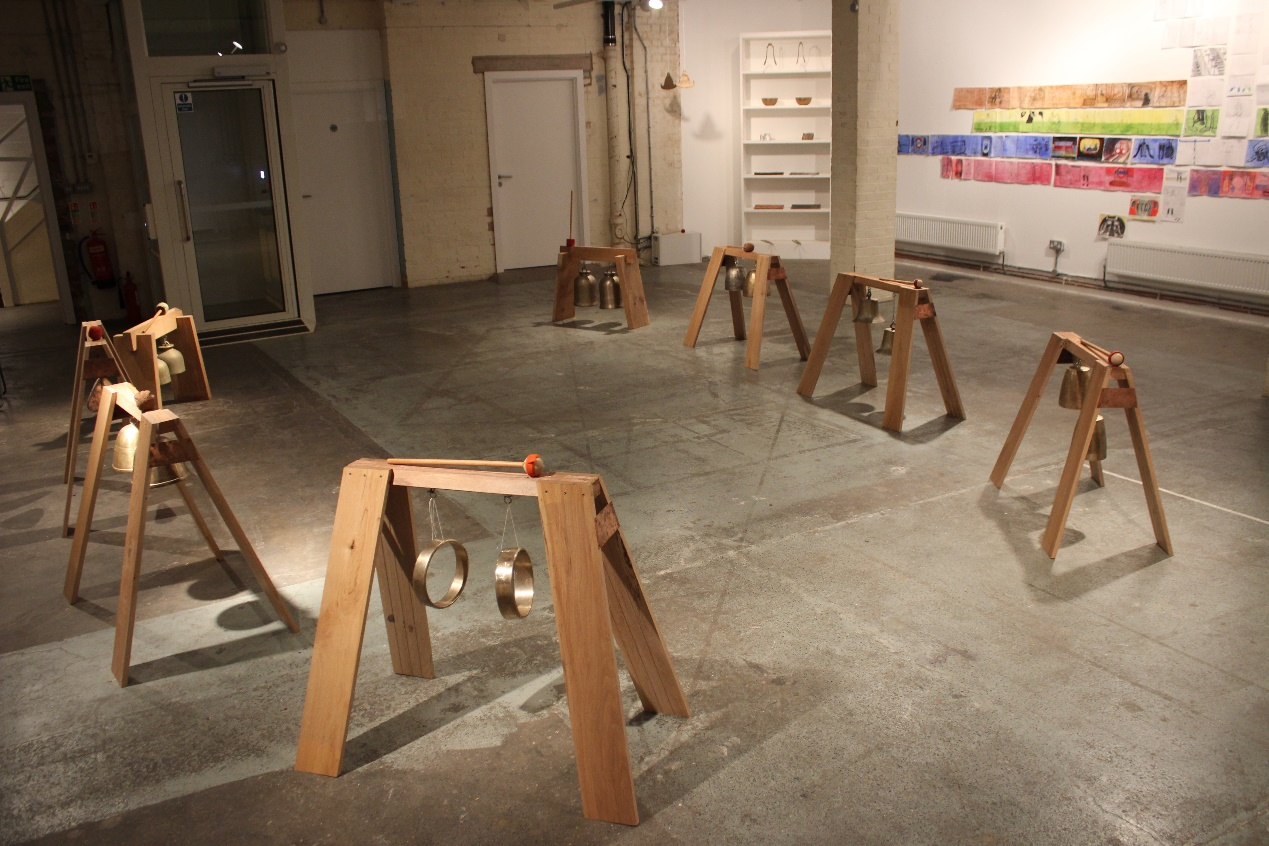
Fig. 5: Same Same But Different (2017). Installation view at Guest Projects Space.
Eight oak saw-horse structures arranged in an ellipse configuration in the large gallery space. Pairs of bell-bronze sculptures (bells and gongs) hang from the underside of the structures.
One solution to the problems identified above, is for me to adjust my art to fit with the needs and expectations of other artists and curators. During a group exhibition at the Beaney Museum, Canterbury (January-March 2018), I deliberately moderated the sound my work could produce in order to avoid interfering with other galleries in the building and to minimize the risk that my work would dominate the space. The six seven-inch plate-gongs depicting pilgrim's medals were hung in proximity so that they would delicately kiss each other when touched, producing clear but gentle tones. Normally I would provide clappers with these types of gong works, but in this case a gentler approach seems to have been successful. I will likely adopt this method of hanging in future projects as it still allows for the physical engagement of beholders but with a much less emphatic outcome. As my work from Same Same but Different along with another large piece was included in the program for the 7th Bienal de Arte Contemporáneo in Madrid in 2018, I had to stress to the curatorial and technical teams that my work might have an impact on other exhibits, particularly if they have an audio element. 7 These are examples of how my approach to the practice of display has evolved in relation to the curatorial context.
On the rare occasions when galleries allow beholders to touch my work, an additional issue – the beholders' behavior – threatens the integrity of my works. Not only did the removal of the clappers at the Beaney Museum reduce the noise of my exhibit, it also decreased the likelihood of breakages. Unfortunately, not all my works can function without clappers, and some need to be rung by beholders in order to work properly. On many occasions, both in galleries and in outdoor installations, my works have been damaged or destroyed by excessively violent beholder interaction. Whilst this has sometimes been caused by petty vandalism or alcohol-induced violence, on other occasions my works have been accidentally damaged by the exuberance and enthusiasm of well-intentioned beholders. This has shown me that as well as needing to educate curators and gallery owners about the challenges of installing my work in sites where beholders can interact with the freely, it is also important to educate beholders about appropriate behavior when handling art.
I am currently developing a commission for the refurbished Battersea Arts Centre in London which takes into account the issues around noise and beholder behavior discussed above. As this venue is largely a performing arts space, I am mindful that the noise my work makes could be disruptive to performers at the venue. My proposal is to create an enormous eight-foot gong to act as the pre-performance bell. The Battersea Arts Centre was once a civic building and the safe that used to house birth, death and marriage certificates is still in situ. I plan to make a large plate-gong piece that is housed within the safe. It would be a work that cannot be casually engaged with and would only be accessible by appointment. This scenario will allow for a large sound sculpture to live in a normally impractical space, whilst the novel nature of the encounter would enhance the experience.
These reflections on the curatorial challenges that my work poses serve to frame a much wider discussion around the desirability of multisensory participatory art: not only do they show the importance of recognizing difference, they also suggest that the embracing of an aesthetics of reception that encourages a more embodied engagement with art can be of immense benefit to all.
Works Cited
- "The Blind Painter." The Real Superhumans and the Quest for the Future Fantastic. Produced by Bird Plane Productions, et al., 2007.
- Derrida, Jacques. Memoirs of The Blind. Translated by Pascale-Anne Brault and Michael Naas, U of Chicago P, 1993.
- d'Evie, Fayan. "Orienting through Blindness: Blundering, Be-Holding, and Wayfinding as Artistic and Curatorial Methods." Performance Paradigm, vol. 13, 2017, pp. 42-65. www.performanceparadigm.net/index.php/journal. Accessed 21 June 2018.
- Farrow, Robert. "Models of Disability." The Open University, 27 Sept. 2010, learn1.open.ac.uk/mod/oublog/viewpost.php?post=73847. Accessed 20 May 2018.
- Fontana, Bill. "Silent Echoes by Bill Fontana." The Sound Sculptures, Acoustical Visions and Ideas of Bill Fontana, resoundings.org/Pages/Silent_Echoes.html. Accessed 3 April 2009.
- Kleege, Georgina. More Than Meets the Eye: What Blindness Brings to Art. Oxford U P, 2018. https://doi.org/10.1093/oso/9780190604356.001.0001
- McPeake, Aaron. The Blind Narcissus Invents His Own Mirror. 2008.
- ---. Echo. 2008.
- ---. Eileen's Palette. 2008.
- ---. F5 Refresh. 2008.
- ---. Iceland Landscape. 2011.
- ---. Iris. 2008.
- ---. Nibbling at Clouds: The Visual Artist Encounters Adventitious Blindness. 2012. U of the Arts London, PhD dissertation.
- ---. Once I Saw it All. 2008.
- ---. River Wandle. 2009, Barratt Homes and London Borough of Merton, London.
- ---. Same Same But Different. 2017, Guest Projects, London.
- "Social Model of Disability." Shape Arts, www.shapearts.org.uk/News/social-model-of-disability. Accessed 20 May 2018.
- seanworrall. "ORGAN THING: Same Same But Different: three artists, Sally Booth, Hugh Huddy and Aaron McPeake, and a must see show to go listen to a Hackney's Guest Projects…" The Organ, 15 Nov. 2017, organthing.com/2017/11/15/organ-thing-same-same-but-different-three-artists-sally-booth-hugh-huddy-and-aaron-mcpeake-and-a-must-see-show-to-go-listen-to-at-hackneys-guest-projects/. Accessed 21 June 2018.
Notes
-
McPeake, A. (2012) Nibbling at Clouds: the visual artist encounters adventitious blindness. London. University of the Arts London.
Return to Text -
See, for example, Discovery Channel's The Blind Painter (2007). Available from: https://www.youtube.com/watch?v=7fG0CDpy_0c. Accessed 21 August 2018.
Return to Text -
I am referring here to the models of disability and how they might be read or articulated in the context of access to arts both as practitioners and beholders. See: Robert Farrow's "Models of Disability" and the article "Social Model of Disability" on Shape Arts.
Return to Text -
During the Blind Creations Conference at Royal Holloway in June 2015, a described 'touch- tour of the university's collection was facilitated by the organizers. Here, instructions were given to beholders on framing the works as well as appropriate behavior: I considered this to be an example of ideal practice.
Return to Text -
River Wandle (2009) www.aaronmcpeake.com/public.htm. Accessed 2 February 2018.
Return to Text -
See seanworrall's review of the exhibition.
Return to Text -
7th Bienal de Arte Contemporáneo: bienal.fundaciononce.es/.
Return to Text

